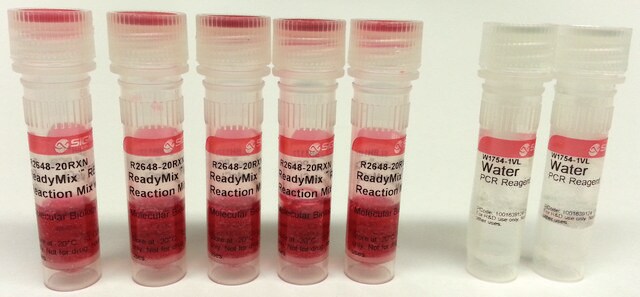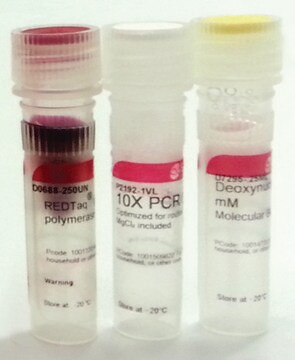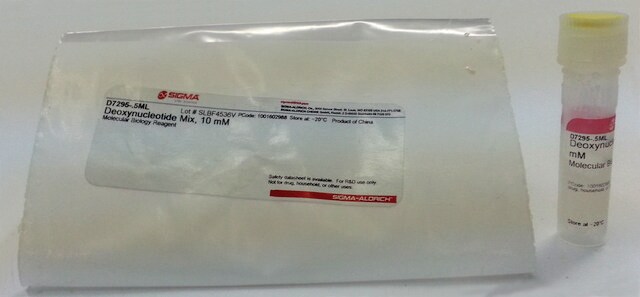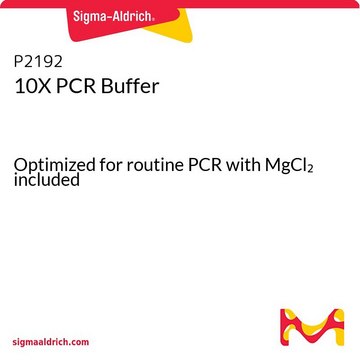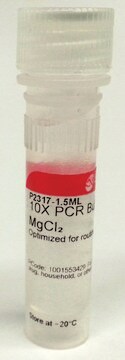D4309
REDTaq® DNA Polymerase
Taq for routine PCR with inert dye, 10X buffer included
Synonym(s):
DNA polymerase with loading dye, Taq DNA polymerase
About This Item
Recommended Products
Quality Level
form
liquid
usage
sufficient for 1000 reactions
sufficient for 250 reactions
sufficient for 50 reactions
feature
dNTPs included: no
hotstart: no
concentration
1 unit/μL
technique(s)
PCR: suitable
color
red
input
purified DNA
suitability
suitable for PCR
application(s)
agriculture
shipped in
wet ice
storage temp.
−20°C
General description
The red dye has no effect on automated or manual sequencing, restriction digestions or other downstream applications. However, if removing the dye is desired, this can easily be accomplished using any standard purification method.
Application
Features and Benefits
- Same great performance as Taq DNA Polymerase in a more convenient format for high throughput applications.
- Visual confirmation that not only has the enzyme been added, but that proper mixing has occurred.
- No additional loading dyes are necessary. An aliquot can be taken directly from the reaction and loaded onto an agarose gel for electrophoresis.
Packaging
Unit Definition
Legal Information
recommended
related product
Signal Word
Danger
Hazard Statements
Precautionary Statements
Hazard Classifications
Resp. Sens. 1
Storage Class Code
10 - Combustible liquids
Personal Protective Equipment
Regulatory Listings
Regulatory Listings are mainly provided for chemical products. Only limited information can be provided here for non-chemical products. No entry means none of the components are listed. It is the user’s obligation to ensure the safe and legal use of the product.
PDSCL
Please refer to KIT Component information
PRTR
Please refer to KIT Component information
FSL
Please refer to KIT Component information
ISHL Indicated Name
Please refer to KIT Component information
ISHL Notified Names
Please refer to KIT Component information
Cartagena Act
Please refer to KIT Component information
JAN Code
キットコンポーネントの情報を参照してください
Certificates of Analysis (COA)
Search for Certificates of Analysis (COA) by entering the products Lot/Batch Number. Lot and Batch Numbers can be found on a product’s label following the words ‘Lot’ or ‘Batch’.
Already Own This Product?
Find documentation for the products that you have recently purchased in the Document Library.
Customers Also Viewed
Articles
Learn about the history of the polymerase chain reaction (PCR), from the basic principles that proceeded its discovery to the awarding of a Nobel Prize for Chemistry and more recent developments such as real-time PCR (qPCR) and digital PCR.
Protocols
Reviews the applications and benefits for RedTaq, including standard RedTaq, Hot Start RedTaq and RedTaq for genomic DNA PCR.
Our team of scientists has experience in all areas of research including Life Science, Material Science, Chemical Synthesis, Chromatography, Analytical and many others.
Contact Technical Service